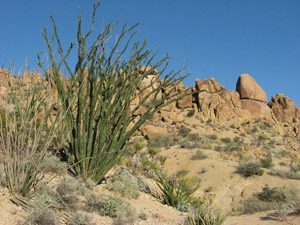One of Top 10 Breakthroughs of the Year
January 8, 2010
Media Contact: Kim McDonald (858) 534-7572

A hormone signals dry conditions to help plants survive drought. Biologists have figured out how the shape of a protein changes when it receives this message - information that may allow them to help food crops get by with less water
J. Jefferson P. Perry
The discovery of a long-sought receptor for a key plant hormone by two teams of biologists, one of which includes Biology Professor Julian Schroeder, has been named by the editors of Science one of the top 10 Breakthroughs of the Year for 2009. In the December 18, 2009 issue of Science, the editors wrote that the discovery of the receptor for abscisic acid, or ABA, which keeps seeds dormant and helps to curtail water loss in plants, was one of their nine runners up for Breakthrough of the Year.
The other runners up were the discovery of mock monopoles, new gamma-ray observations, a drug that increases life span, ice on the moon, gene-therapy successes, insights into the properties of graphene and how to use it to make novel devices, Hubble's rebirth, and the first x-ray laser. The journals Breakthrough of the Year was the discovery of a rare 4.4-million-year-old skeleton of Ardipithecus ramidus, which revealed the surprising body plan and ecology of our earliest ancestors. More on Schroeder's discovery from the San Diego Union-Tribune
Related Links